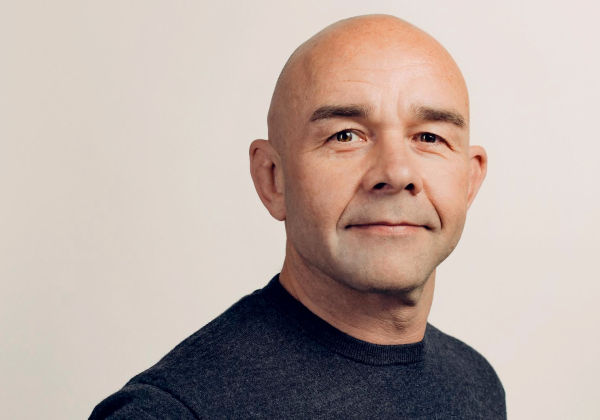- Executive Profiles
- IQ
- IQ Insigniam Quarterly® Magazine
- Speed to Value: A Playbook for Bold Results
- Transformational Leadership
Governance Masterclass: Irene Chang Britt
Like any great director, Irene Chang Britt has the innate ability to bring a masterful vision to life. As one of the most distinguished leaders and innovators across the corporate landscape, Ms. Chang Britt’s career includes senior leadership roles at Campbell Soup Company and Kraft Foods, as well as her tenure as president of Pepperidge Farm.
Yet, most recently, Ms. Chang Britt’s role as a revered board director has afforded her a new palette to exercise her leadership credentials for companies such as Victoria’s Secret, Dunkin’ Brands Group, and biotechnology research leader, IDEXX, to further accelerate their success.
Insigniam Quarterly recently had the opportunity to speak with Ms. Chang Britt about the need for strong governance, as well as how an emphasis on diversity, trust—and perhaps even A.I.—are reinventing the dynamics for effective board leadership.
IQ: You have an incredible reputation as a leader and innovator in so many facets of the corporate world. Regarding your board leadership roles, can you share how boards can play a critical role in helping a company accelerate its path to achieving significant results? What strategies or actions must be involved?
Ms. Chang Britt: For me, it’s all about how you set things up. You should have a strong management team and a capable board working in harmony to drive the company forward. They need to collaborate effectively, ensuring the strategy is set and executed seamlessly. This brings me back to three crucial elements: a well-defined process between the board and management, a clear framework, and accountability.
Let’s examine that further. The process involves a strategic cadence, where the board and management establish and periodically review the company’s strategy. In the past, this might have been a once-a-year thing, but in today’s rapidly changing world, the best boards consistently revisit their strategy during each board meeting to adapt to evolving circumstances.
Now, when it comes to accountability, it’s vital to have a system in place to assess progress against the strategic framework. The board evaluates management’s performance, but it’s equally important for the board to assess its own effectiveness throughout the year.
Above all, trust is a cornerstone. Even with the best processes, without trust, it’s tough to make things run smoothly. As an anthropologist turned businessperson, I believe in the importance of social psychology, and transparency is a key ingredient. While management should be transparent with the board, the board should reciprocate. There should be no surprises or hidden agendas. Trust should be a two-way street.
Boards must work to earn the trust of management just as much as management needs to earn the trust of the board. Having good intent from the outset is crucial. That’s why I emphasize creating a framework that prioritizes long-term value for the company and committing to pursuing strategic initiatives with an open and sincere approach. It might sound soft, but these intangible qualities are the building blocks of trust, agility, and the pursuit of shared goals without hidden motives.
IQ: Speed to results often requires making decisive decisions. In your experience, how can boards strike the right balance between thorough deliberation and expeditious decision-making?
Ms. Chang Britt: That’s why having a solid strategic framework is crucial. In the companies I’m involved with, I emphasize the importance of establishing a robust strategic framework, and many of my fellow board directors share this perspective. A framework provides structure while allowing for flexibility. Without it, it’s like popcorn popping; anything can happen at any time. This might seem like agility, but it often leads to chaos. With a well-defined framework and alignment, you can adapt quickly to new data.
You’re absolutely right about the need for speed, but rushing into decisions without a foundation can lead to failure. It’s all about finding the right balance. With a framework in place, you can respond agilely to new variables as they arise. This enables quicker decision-making because you have a solid basis for evaluating new information.
One of the most critical aspects is that the framework isn’t arbitrary; it’s data-driven. It’s based on extensive data analysis. So when unexpected variables come into play, there’s usually data to support or analyze them, even if they seem to come out of nowhere. We’re constantly receiving signals from the marketplace, from competitors, customers, suppliers, and the entire value chain. The challenge is to determine whether these signals are significant, and if so, how urgently they need to be addressed. This involves a lot of judgment, but it’s informed by the data at our disposal. Given the constant stream of information, it’s essential to prioritize which signals require our immediate attention and which can be addressed later.
IQ: When designing such a framework, how can boards ensure that they are effectively balancing long-term needs for their business with the need for agile responses to changing market conditions?
Ms. Chang Britt: The framework should strike a balance; it needs to be clear and not overly complex, yet it should be goal-oriented, focusing on longer-term objectives rather than just short-term goals. Let me illustrate with an example: Suppose you have a brand or a company losing traction with the next generation. Part of your strategic framework should include the goal of attracting Gen Z. This goal remains relatively constant. However, it might disrupt your company if it has been primarily focused on, say, the boomer generation, and now you need to appeal to Gen Z. Under this overarching goal, there are various strategies and initiatives.
The key is that the goal of attracting the next generation doesn’t fundamentally change. The framework is strong in that sense. It doesn’t hinge on an entire generation suddenly disappearing or losing their purchasing power. However, the methods you use to achieve that goal can evolve in response to new variables, such as shifts in Gen Z’s consumer behavior.
This flexibility in the framework creates a foundation for robust discussions between management and the board. For instance, when Gen Z alters its buying habits, it can prompt discussions on how to adjust strategic initiatives in the coming 12 to 18 months. But remember, this doesn’t negate the core objective of attracting the next generation; it’s about adapting your approach.
This scenario is not an obscure example; it’s a common challenge for many companies. They become so efficient at catering to one generation that they forget to allocate resources and efforts toward the generation that’s on the rise. It’s a cycle that many companies need to recognize and address.
IQ: How can diversity—both in terms of backgrounds and perspectives—within a board of directors influence a company’s ability to act swiftly and achieve desired outcomes?
Ms. Chang Britt: There’s a significant business case for diversity—it’s not just about doing something socially good; it’s about bringing in people who understand our customer base, client base, supply chain, and the entire value chain. I’ve been fortunate to be in situations where diversity has significantly influenced our strategy, making it more dynamic than it might have been without diverse voices at the table. When I mention diversity, I’m not only talking about gender, race, sexual identity, and age. I also value socioeconomic diversity. People who didn’t have everything handed to them often bring unique perspectives to the table.
I recently read an article that suggests that diversity can slow things down due to the many voices involved. While more voices can lead to more discussions, what’s essential is having a strong process and a clear framework, coupled with effective leadership. Board leaders, such as the chair or committee heads, need to know how to facilitate and guide discussions towards decisions.
Over the past couple of years, we’ve relied on virtual meetings, which were efficient for getting work done, but they didn’t foster deeper relationships. While it’s great for speed and convenience, it lacks the personal touch. Face-to-face interactions, like sharing meals or casual conversations in the hallways, are crucial for building trust. These moments allow us to connect on a human level and see beyond the formal boardroom discussions.
Seeing people in person, especially those from different backgrounds, can accelerate trust-building. When someone doesn’t look or come from the same background as you, it might take more effort to establish trust. As humans, we tend to gravitate towards those who resemble us, but we also have much to learn from those who are different. In essence, we find comfort in those like us and valuable lessons in those who are not.
IQ: What strategies or practices have you observed on boards that promote a culture of accountability and responsibility, which can contribute to faster results?
Ms. Chang Britt: In high-pressure environments, like decision-making that impacts many lives and significant financial resources, the need to build trust among board members is paramount, and it can be challenging to maintain. Trust takes time to develop. Building trust within a team is intentional work. It’s about preparing for those pressure-filled moments in every interaction, so that when critical decisions arise, the team can act as a cohesive unit. These moments may not happen every day in management or on boards, but being ready for them is crucial to making well-coordinated decisions.
We must approach disagreements with an open mind. When you find yourself in a heated discussion with someone on the opposite end of the spectrum, it’s essential to actively listen. Pose questions that genuinely seek to understand their viewpoint and where they’re coming from, rather than immediately interpreting their thoughts based on your preconceptions. It’s a bit like the wisdom your grandmother might have shared: You have two ears and one mouth in that proportion—use them appropriately.
IQ: In our A.I. age, business landscapes are evolving rapidly. Do you see a place for A.I. in a board’s modus operandi, and if so, what are some potential use cases for A.I. to ensure speed to results?
Ms. Chang Britt: I would say less as a use case for the board themselves, but more so, it is a huge variable that has been thrown into the mix.
AI is a game-changer that offers tremendous advantages for businesses that use it. AI enhances efficiency, productivity, and customer service. It’s a valuable asset for improving backend processes. But, it’s not all sunshine and roses. AI brings significant security risks, from cyber threats to potential mismanagement. Therefore, it’s crucial for board directors to stay well-informed about AI, its principles, and how it’s implemented.
That’s one of the reasons why I emphasize diversity. Gender and race diversity are essential, but I also believe in age diversity. Wisdom gained from a long managerial career is invaluable in the boardroom. However, to stay relevant and tackle fast-moving issues like AI, we need insights from different generations. That’s why I strive to bring working executives onto the board. They offer real-time experience from other companies, which is vital in understanding rapidly evolving topics like AI.
The business world has picked up speed, thanks to the digital era. Long-term thinking remains essential, but staying relevant means continuous learning and adaptation. So, I often ask myself and my fellow board members: How are we staying up-to-date? What are we learning, and how are we applying that knowledge? Personally, I serve on startup boards, which keeps me engaged with SaaS and digital-first companies. It’s a two-way street – I share my experience, and I gain new insights, ensuring that I’m not left behind despite not working full-time.
IQ: If the role of a board member involves providing guidance and oversight, how can those new to serving on boards avoid micromanaging and ensure they are enabling management teams to execute effectively and efficiently?
Ms. Chang Britt: The old advice used to be “just listen for a year,” but that’s not true. We recruit board members for their expertise, aligning their skills with our strategic needs. Most companies follow this approach. When we bring someone onto the board, it’s not because they’re a friend; it’s because they possess a specific skill set that’s immediately valuable. They might not know the company well yet, but they bring their skills from day one. You can listen, go through orientation, ask questions, and find a board buddy for informal discussions. But remember, your skills are relevant from the start. They’ll grow deeper and broader over time, but you can contribute from day one.
It’s crucial to shift from a management mindset to a governance perspective when you enter the boardroom. This can be challenging for high achievers who’ve had successful management careers. The temptation to say, “I have a better idea” can be strong, but it’s not always the right approach.
We must keep in mind that the world is changing rapidly, and I’m passionate about business and serving the companies I work with from a board perspective. I intentionally chose boards outside my original industry to keep learning. I believe in cross-pollinating ideas because having a mix of backgrounds prevents the duplication of management thinking. I’m fascinated by what’s next, how to help management navigate changes, make decisions, and achieve success quickly. From a board perspective, the game is about stewarding value creation over time. The beauty of a board career is having a portfolio of roles where I can continuously learn, contribute, and push thinking forward, all while being an asset to management rather than a necessary evil.
BIO: Irene Chang Britt is an experienced board and committee chair on public and private boards, across varied industries. She currently serves on the boards of IDEXX (Board Director), First Watch Restaurants (Board Director), Amica Senior Lifestyles (Chair of the Board), Victoria’s Secret & Co (Chair, Human Capital and Compensation), Peloton Capital Management (LP and Advisory Board Member), e-commerce start-up MikMak and allergen-free food start-up Partake Foods. Her previous corporate boards include Dunkin’ Brands (Chair, N&CG), Tailored Brands (Chair, N&CG), TerraVia (Chair of the Board), Brighthouse Financial (Chair, N&CG) and Sunoco. She also currently serves on the board of the not-for-profit leadership development organization Center for Higher Ambition Leadership. Formerly, Ms. Chang Britt was a Fortune 500 President and SVP, with a distinguished 30–year career at Campbell Soup Co., Kraft Foods, Nabisco and Kimberly-Clark. She earned her BA from the University of Toronto, and her MBA, with honors, University of Western Ontario Richard Ivey School of Business.



